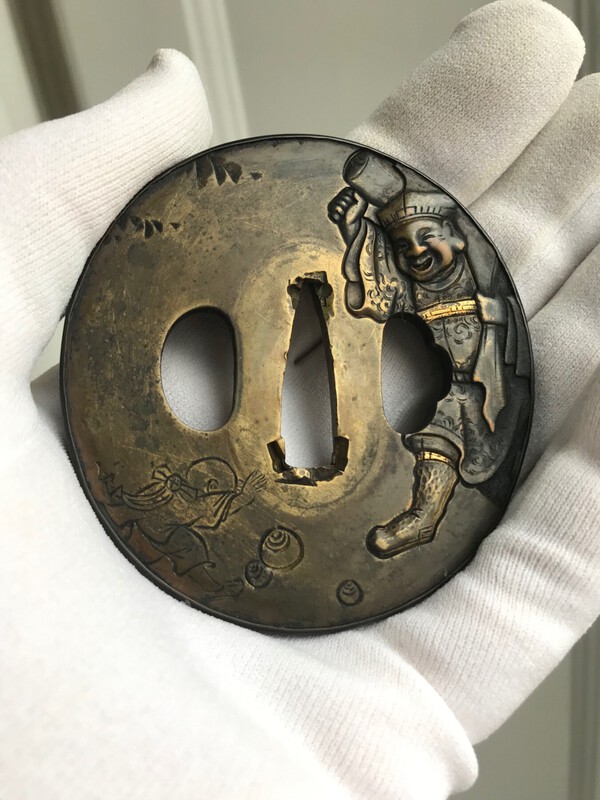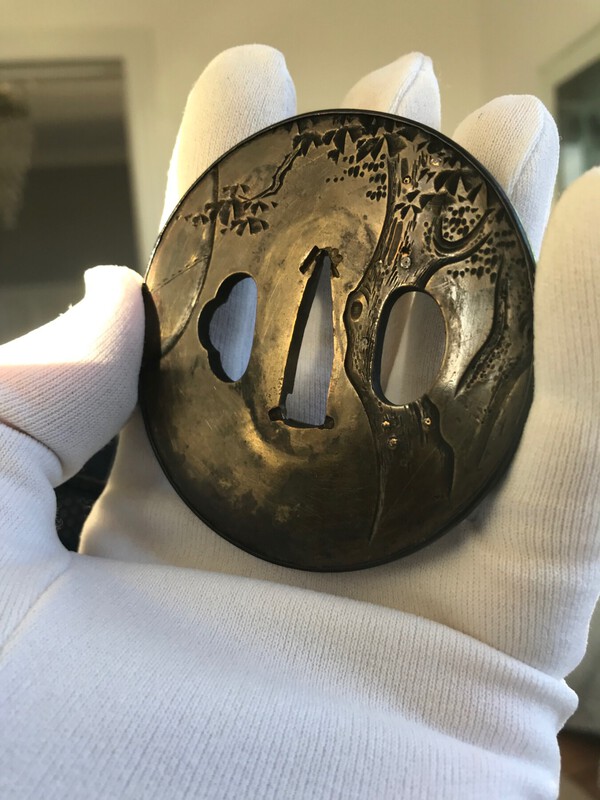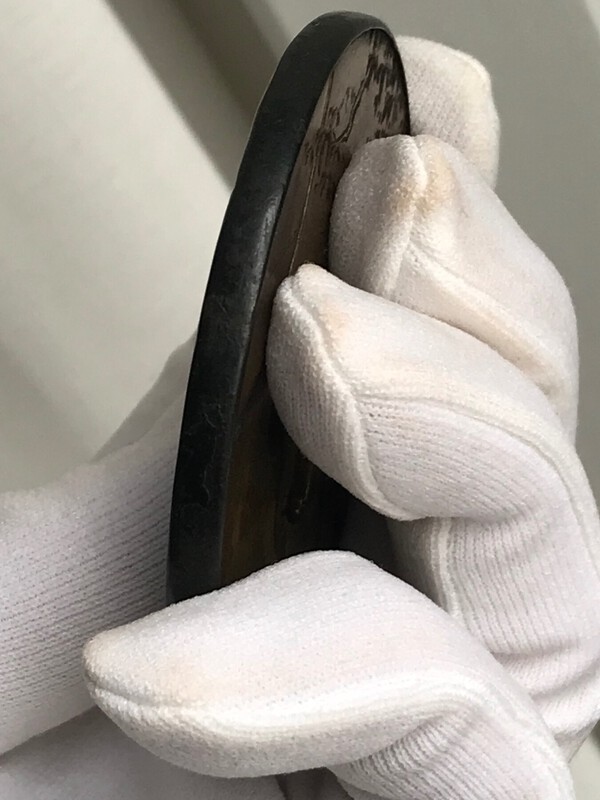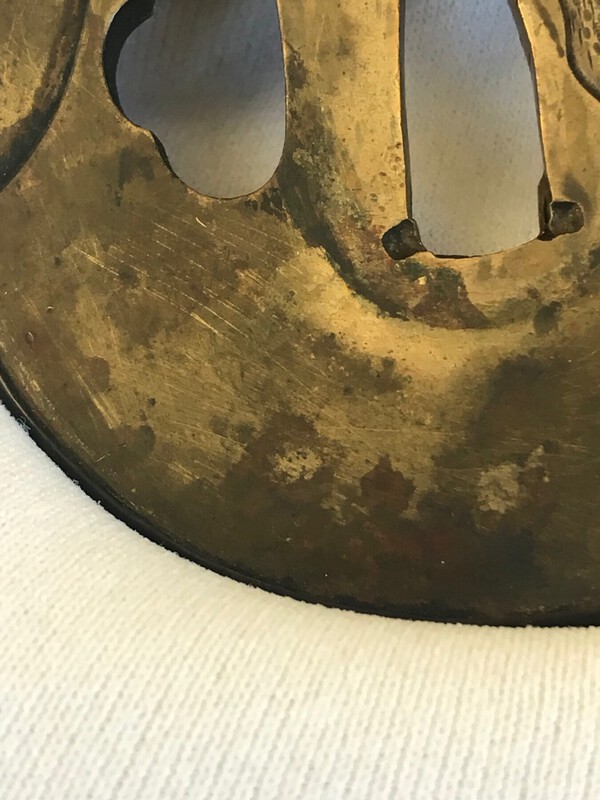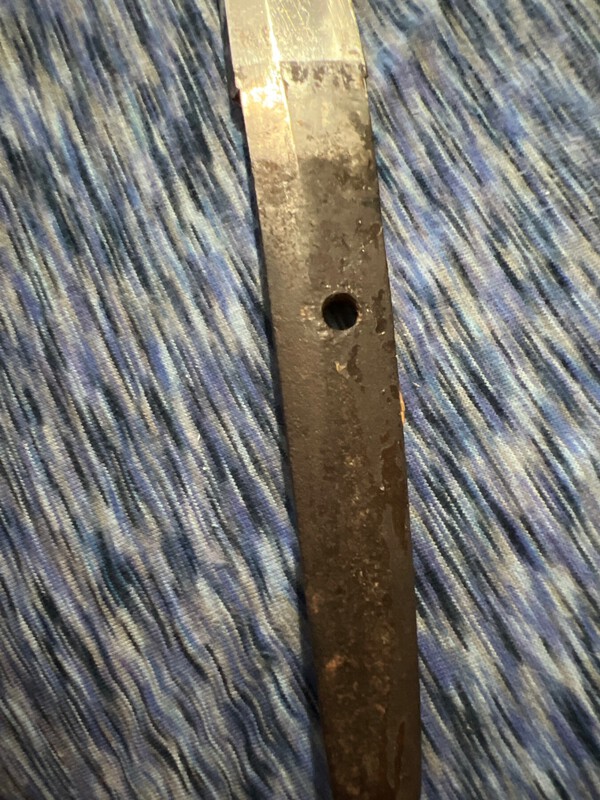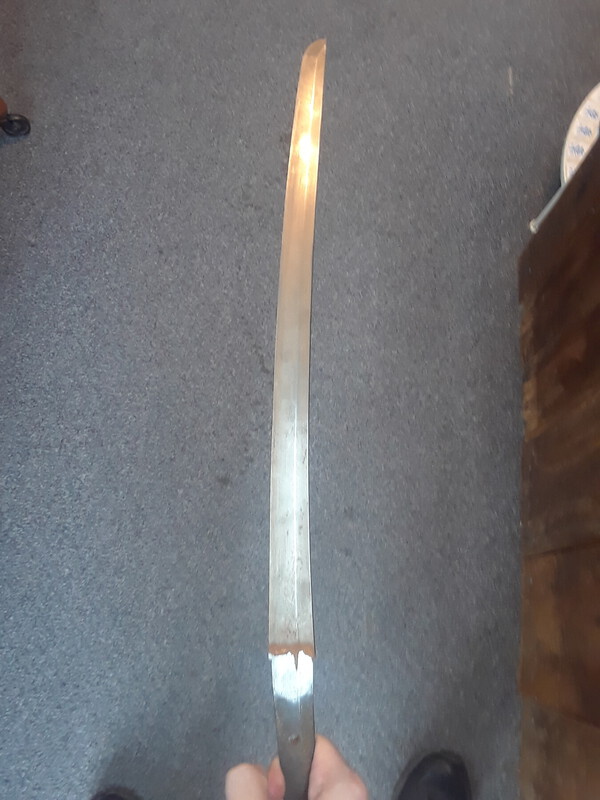Search the Community
Showing results for tags 'restoration'.
-
Hello everyone! I am posting up a collection of tsuba for sale on behalf of a friend. He is trying to move this lot of tsuba onto others who will have the time to restore them as he doesn't have enough hours in the day to deal with all of them. The price is $120 each, + $10 shipping within the US (flatrate USPS box) for as many that will fit. I do believe they would all fix in one box! International shipping I would have to investigate further. Shipping insurance is extra past $100 I believe but wholly recommended if you buy more than one. IF you buy 5 or more, I'll knock $10 off the price per tsuba OR donate $10 to the message board per tsuba, your pick! If you buy the whole lot of 22 pieces for a group price of $2300, then I will donate $300 to the board. This group rate can change if others sell before then. As for the tsuba themselves, they are all good iron pieces in solid but soiled condition. Some will need gentle cleaning and rust removal. Three of them are signed and they all vary in age from early Muromachi to Edo. I have seen them all in person at the last Indiana Token Kai meeting and there's quite a few good ones in this lot! Treat them as numbered in rows, top row = 1 - 6, and so on. The ones circled in blue are signed and are posted in the next post. If you want a closeup of any other one in particular, just ask, but please, serious inquiries only as I have to ask my friend to send me said closeups. The second photo is the same photo, but with the signed tsuba circled in blue. Respond to this thread as my message box gets full often! ~Chris
-
Dear Forum, I know that this is a rather controversial topic, but I wonder what your opinions are on the cleaning of the silver/shibuichi on antique tosogu, which often produces a quite unpleasant uneven dark grey/black tone tarnish (likely silver sulfide?). I am aware that it could be dangerous to make any move on them since these are often a very thin silver/shibuichi layer. I wonder how you determine if something is cleanable, and how you clean it if so. I found some discussion online using acidified thiourea or 5% hydrogen peroxide to remove the tarnish chemically, but I am not sure if they can be applied to tosogu. I would appreciate any suggestions. C. C.
-
Hello All Looking for some advice on where to find replacement screws for ishizuke (Chape-tip) (model 44-blackish color), need one screw here, and one for Kuchi-Gane (throat) have no ideas where to even start as far as size etc (maybe .5MM???) Also need a couple of screws for am early war shin-gunto (the type with open cast patina covered Tsuba and the fairly standard OD green Saya. Any ideas on where to look? Thanks
-
I am trying to date this blade. I can't figure out which Kuniyuki made it. I am also trying to figure out if it is worth the money to do a full polish and mount. Please help. I am new on here so bare with me.
-
Hi, About a year ago, I started the restoration of the koshirae of a nihonto I bought. The blade the original koshirae was mounted on is nothing special. The price of a polish would exceed the price it would be worth afterwards. Same with a new koshirae. But it was the first nihonto I bought, and I wanted at least to preserve the blade. The original saya and tsuka were cracked and no longer airtight. First I crafted a new tsuka core and then finished the tsuka with new antique fittings because the original kashira was lost. After the tsuka was finished, I bought honoki wood from Namikawa and started carving the saya. After months, the carving and lacquering is finished. I chose an Ishime pattern for the saya, and I think it was not a failure. The Katana kake in the background was also made by me. The next project is building a lightning solution. The current one is only a prototype to test the function. Please ignore the cables. They will be hidden afterwards. One of the pictures is a before-and-after picture, by the way. I hope you like the new koshirae and don't just dislike it, because it was not crafted by a traditionally trained artist. I did the best I can and learned lot on the way. If I were to start again, I think the build would be even better.
- 4 replies
-
- 6
-

-

-

-
- koshirae
- restoration
-
(and 1 more)
Tagged with:
-
I recently acquired a Kai Gunto for about 400. The blade is in excellent shape however the Tsuka is in very rough shape and if it was possible to restore it or any professionals that provided such a service.
-
Hi, I bought a Nihonto last year which had a split saya and broken tsuka. The pictures below are how the state was when I bought the sword. I first built a new tsuka from scratch. By the way, I am no woodworker, and this was my first real woodworking project. Later I build a new saya due to the cracked saya, which is not airtight anymore. The wood is honoki wood I bought from Namikawa. Picture below shows the old cracked saya Below is a photo with almost finished koshirae The last step I have to make is to add a Kurikata. I know you normally carve the place for the kurigata out before painting, but the material was too thin to make it that way. The original saya is also very slim, and I made it like the original. I choose to paint it black and still consider making an ishime finish before adding the kurigata. What do you think? The paint is not urushi because it is not really available in my country, and curing it is not possible in my environment (air humidity and temperature). I also built the katana kake in the picture. I hope you like it. Finally, the reason I built a DIY korishae is because the old one is broken, and it would not make sense to get a new one made before it was polished. Because the blade is a mumei and probably not worth the money it would cost to get it polished and get a new koshirae, I made the decision to leave the blade in its unpolished state and just make a new koshirae. The project was really interesting, and I learnt a lot from it. I think it looks good for my level of skill in woodcraft. Please don't hate; just constructive criticism.
-
Recently at the advice of a friend with shared interest in the preservation of nihonto, I’ve tried and now implemented the use of 99% isopropyl alcohol in my sword care regimen. I’ve used it, rather than uchiko or anything so abrasive, to remove old oil at the start of a cleaning or before studying my blades. My test run was on a showato I posses, and with great result I have since implemented it for use with my nihonto. A partially saturated, folded tissue paper wiped gently across a sword does a fantastic and quick job of removing old oil and evaporating. A single follow-up wipe with dry tissue paper or a microfiber cloth ensures dryness and gets up any remaining bits. The blade is left perfectly cleaned, an unharmed. Everything in moderation, of course. Attached is a photo of my gendai Hizen-tō after such treatment. V/R, Jim
- 25 replies
-
- 4
-

-
Hi, I am still new to this forum but i want to share with everyone a unique piece, that is my absolute favorite among our vast collection, from the military history institute museum I work at as restorer/conservator. As the title, possibly somewhat confuzingly states, It is a amalgamation of a Japanese blade and Austrian officer navy fittings. I will post some photos but I just found out that the are not great, i can and will take better photos of the blade around monday next week. I will write everything we know about it plus some history toward the style of fittings it is housed in, and the blade was not removed from the handle yet, I have to get to it and find out if it is signed. I will write some history here: Austrian naval officer were issued navy sabers first in 1827, later in 1837 it was changed to more archaic straight blade "kord" or small sword in english. In 1846 new style of saber was adopted again, this model was based on frech navy saber. This model was used during revolution years of 1848-1849 by officers who joined the rebels. After their surrender loyal navy officers requested new type of saber since previous one was, as a symbol of the emeror, disrespected and loyal officers refuzed to wear it. New model 1850 was created with elaborate carving on the handguard, anchor and mermaids, and later in 1871 hangers were added to the scabbard. for refference i have link to our museum website with example: https://www.vhu.cz/e...rnictva-vzor-185071/ Ownership of thissSaber with katana blade was by previous museum staff attributed to heir to the Heir to the throne of Austro-Hungarian empire Franz Ferdinand d´Este. It would be plausible given the quality of the workmanship on the golden fittings and the blade it self. Heir could have acquired it as a gift from Japan during his travels around the world between years 1892 and 1893. There is also some archival evidence (not sure if we have any photo evidence as well) that he admired the swordsmanship while visiting Japan beign avid and quite skilled swordsman himself, although proficient in saber combat only. Visited some showcases of sword combat and possibly participated in some form of friendly sparring. Unortunately this acquisition story is not supported by evidence and place of discovery. Current research by our curator of arms states that this saber belonged to one Hieronymus (Jeroným) VIII. Colloredo Mannsfeld (1870-1942) There are two pieces of information that suppor that it belonged to him, First: he held rank of Corvette Captain and was for quite some time stationed in Tokyo, later he became naval attaché in Berlin. He was overseeing Mansfeld holdings in Bhoemian lands including castle in town Zbiroh where this very saber was found, which is evidence number two. Either way, now to the saber itself: https://www.vhu.cz/e...ictva-vzor-185071-2/ Speaking about the condition, only damage is to kissaki, some light scratches and wear, possibly due to sheating and unsheating of the blade, othervise it is in great condition. This is the few photos i have so far, I hastily took some because there was not time to fiddle with it, we were close to opening the museum after years of renovations, so I had to put it back on display fast. What I will do next week is to get quality pictures of the blade so that everything can be viewed clearly. I know that Japan had many military swords that bore influence from European sabers of the time that were standart issue up until the return of the katana style of blades before Second World war, but i think this is very unique in that it is standart naval officer saber fittings fitted with nihonto. Photos may not speak to its quality but in person the quiality is amazing. I post this here as a curiosity and subject of research i plan to do with this blade, I plan to take it out of its fittings, probably will be first time since its creation. I hope you like my post here, would be nice if this could spark some good conversation or posibly any ideas of its origin, but I understand that without closeup of the nakago and quality photos of the blade it could prove very difficult. Maybye we can follow up at later date. Anyway thank you for reading this far, In near future I will take this off of the display and do some closeup exmination and share what I found. Cheers
- 16 replies
-
- 17
-

-

-
Maybe someone here on the forum can help me with identifying this Kao mark or the maker on this particular Tsuba that I have recently added to my collection. YES its a little rough and it could do with being restored as the silver has some major wear to it is some places. The Tsuba looks like it was previously mounted at one point or another in its life. more so i am just curious to see what some of the members here say about its origins. The theme is of Uba and one of the Twin Pines but that is just my interpretation of it. Possible Kao Mark could be Kazunori (139 Joly's) but I have my doubts as I cant find any other Kao similar to or matching this one to verify it
-
- 3
-

-
- restoration
- tsuba
-
(and 1 more)
Tagged with:
-
Hi there, Ive got a fairly low quality Wakizashi that until recently had a pretty good shine, I probably should have oiled it, but now all of a sudden one side has gone fairly rusty. The sword is not worth enough to get a proper polish, is there any other way, or a guide to remove this surface rust easily? Any help is appreciated, Thanks
- 3 replies
-
- 1
-

-
- wakizashi
- restoration
-
(and 1 more)
Tagged with:
-
I have these weird circular spots appearing on my blade. they are only visible if the blade is bone dry. when i apply oil, they are invisible. originally i thought those are spots with dried oil, but nothing i did could remove them, now im a bit worried. what could these spots be? they appear in a pretty even pattern
-
I bought this 1944 Gendaito from a friend in Tokyo, and I'm hoping to have a new tsuka refit. I bought this sword for formal tameshigiri, however, the tsuka is loose and cracked in a few places. Additionally, I'm not a fan of its black, lacquered tsukaito or the Gunto Kashira. I was wondering if anyone knew of someone (preferably in the U.S./TX) where I can have a new tsuka fit. Thank you!
- 11 replies
-
- katana
- restoration
-
(and 1 more)
Tagged with:
-
Hello all, I'm back with an update on a wakizashi I acquired a few years ago. I started a thread that can be seen here: to ask about the origins and authenticity of this wakizashi blade. Since then, I have had the blade polished and a shira saya made for it, and i'm basically wondering if any of you more knowledgeable folks on here can offer your opinions on the possible origins of this blade now that more of its features (hamon, hada, boshi, etc) are visible. I was offered a possible explanation for whom the Smith may have been related to, as well as a time era for said Smith, but I'm wondering if the features of the blade align with this info, or if it appears to be from a different time period than previously thought? Thanks a ton for any thoughts you're able to offer 😊 New images of the polished blade can be seen here: https://imgur.com/gallery/N1CslJ3
-
Hi all. New to the forum and to collecting Japanese Swords. A few months ago I bought a Wakishabi which is in a reasonable state of polish but could do with some attention. This weekend I added to my collection a Tanto which was terribly rusty and had been badly scratched with what I assume to have been sandpaper but the guy just wanted to be rid of it as he seemed afraid of it for some reason. I thought the Tanto would be an opportunity to try to learn polishing. I wondered if anyone could read the Mei on either of them.
- 11 replies
-
-
Hello, I recently uploaded a photo of my kozuka blade that I bought from a flea market, but obviously no one could give information with only one photo. So now I’m uploading better photos. There is a writing on the blade which I can’t read as well. My questions are: when was it made? By whom? And should I restore the gold that has worn off from the handle? Thank you.
- 2 replies
-
- 1
-

-
- kozuka
- restoration
-
(and 1 more)
Tagged with:
-
I just wanted to start this new topic about the polishing of my Kanemoto Katana, which has been in the works for over a year. I just received an update from the polisher. The dark spots in the ji and ha have been cleaned, as well as the rust specks on the mune (see before restoration photo below). He is now working with the uchigomori stone for those areas, he will then move on to shiage. At this point I am so far down the "rabbit hole" I will disclose who the professional Japanese sword polisher is. It is Woody Hall who is based out of Las Vegas. Once I get the sword in hand, I will post photos to this topic on NMB. Have a wonderful week everyone.
-
Here is a before and after picture of a Katana sized Ko-Mino Fuchi-gashira (古美濃縁頭) set that underwent professional restorative cleaning. Most of the arduous work was done on the kashira. The set turned out very well in my opinion. The set is hard to photograph in detail because the height difference between the base and the top of the carving is very great. This is a characteristic of the workmanship of the Ko-Mino group. By the Edo Period the difference between the base and the top of the carving was reduced. I am going to upload a full set of high-resolution photographs to my homepage (https://www.tsubaotaku.com/) on the first of March but wanted to show two photographs at lower resolution as a fun preview on NMB. Let me know if you have any questions and feel free to discuss it openly but in a polite and respectful manner. Before: After:
-
Dear NMB fellowship, Once again I hope to draw knowledge from your experience and expertise. In my little quest to get wiser on the subject of Tsuba I have found my self buying different kinds of Tsuba (e.g regarding base materials, design and schools). This time I found a much used brass (Shinchu) Tsuba with the design of the Japanese deity “Daikokuten”, God of fortune and wealth (among a lot of other traits) and a child apparently playing with spinning tops. It shows clear signs of having been mounted (probably on a Wakizashi). Measurement’s: 7,2 x 7,0 x 0,5 cm weight: 130 grams Material: brass with inlay of other soft metals. Mimi is a ring of soft metal that has the feel and look of shakudo (but I am in doubt). There is no iron in or around the Tsuba. Design: Daikokuten with mallet and sack / child playing Mumei School: my own guess would be Mito school? 🧐 Period: probably late Edo period to early Meiji period I would very much appreciate your thoughts on: School and if possible a suggestion on maker Design and carvings Possibility of restoration of patina (looks like a previous owner may have tried to polish the surface with a rather “heavy hand”) All the best Soren Omora side Ura side
-
Bought this the other day thinking it might be cool to restore. The tang looks to have been cut down at some point and has no signature. Scabbard looks like a shin gunto combat cover, but I'm new to this and I could be completely wrong. If it is what tsuba and tsuka would be correct?
-
Hey! This is my first Nihonto I got from eBay for 100$. Was hoping to maybe get any info on it anyone may know like how old the blade is. Also wanted to ask if the crack in the blade would be consider “unrestorable” if I sent it to a professional. Thanks in advanced!
-
What do you do with the leather field scabbard that’s falling apart due to old age ?
-
Hey guys, I've got a wakizashi of a friend here. He is curious about whether or not it makes sense to have restored. I told him it largely depends on the signature. The signature looks confidently written, but that could mean nothing. The blade has a clipped/snapped tip, but it appears to not pass through the hardened edge (a few mm of tip loss). The blade is about 18" (from what I remember, I'll change this once he gets back to me) and appears to have a suguha type hamon. It has a shirasaya with integral wooden habaki in poor condition but appears to have once been of good quality. The blade is quite stout and appears healthy enough to receive a polish. It gave me the impression of a Sukesada-type work. My asks for my friend's blade are: Translation of mei Veracity of mei: shoshin or gimei? Worth restoration or no? General impression/opinion Again, any help/feedback is appreciated guys, Thanks! ~Chris
- 11 replies
-
- wakizashi
- restoration
-
(and 1 more)
Tagged with:








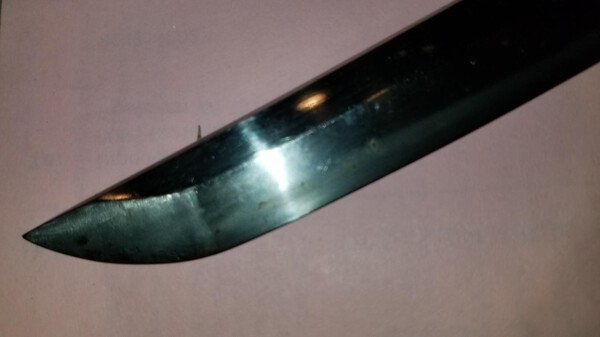
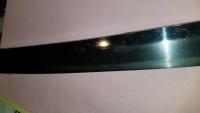














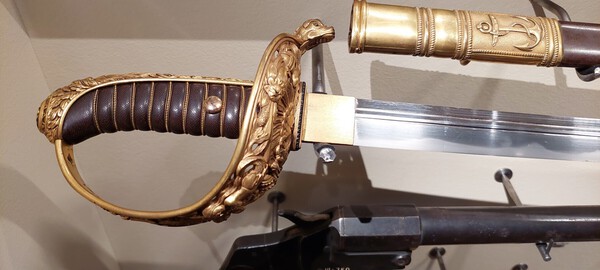












.thumb.jpg.4e89e37cc492793f18c75e4d49f4b453.jpg)
.thumb.jpg.979416a3bbcd93a36c357ae60538492f.jpg)
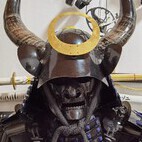

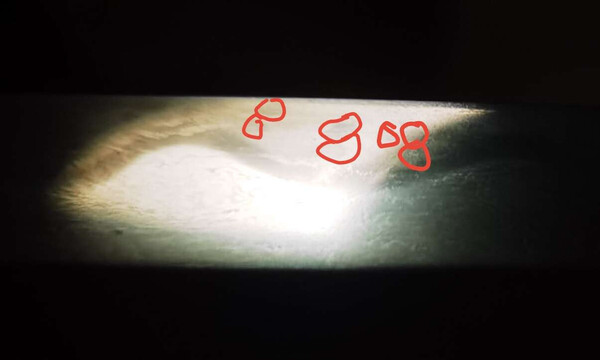

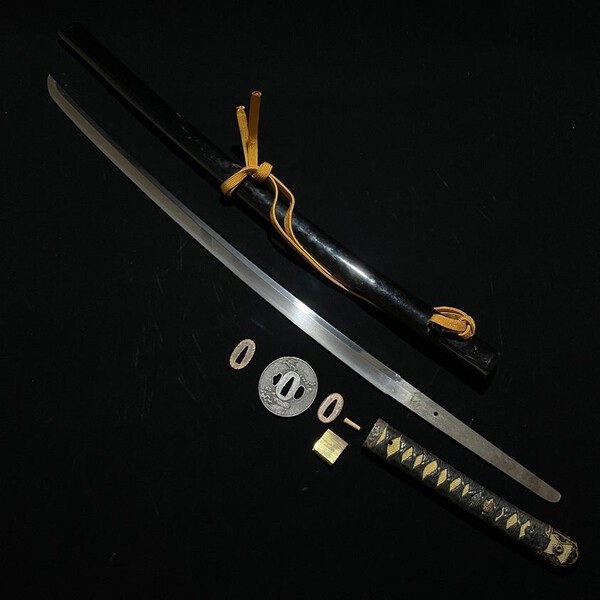

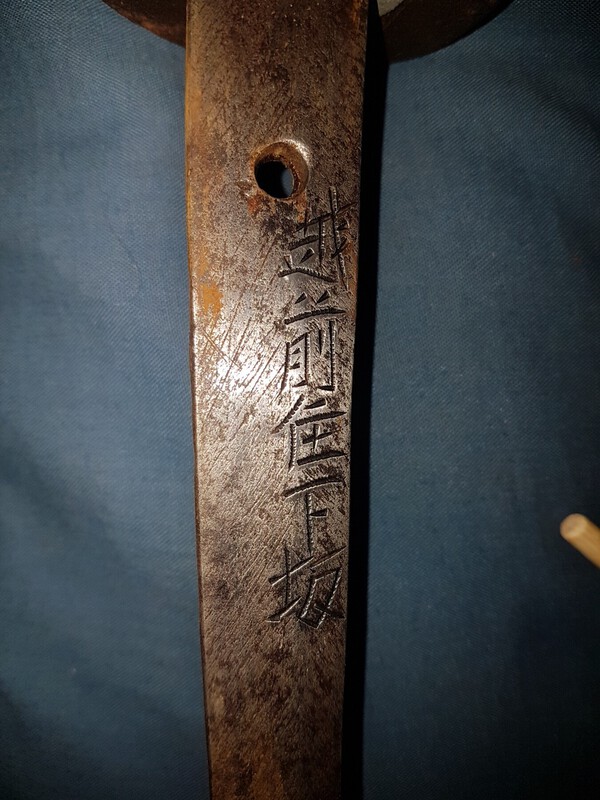




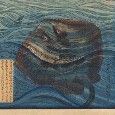




.thumb.jpg.1aa821fb2677d81d007730ce766a475e.jpg)
.thumb.jpg.3d352ef56fa160e6847cd2f06feb05e5.jpg)



